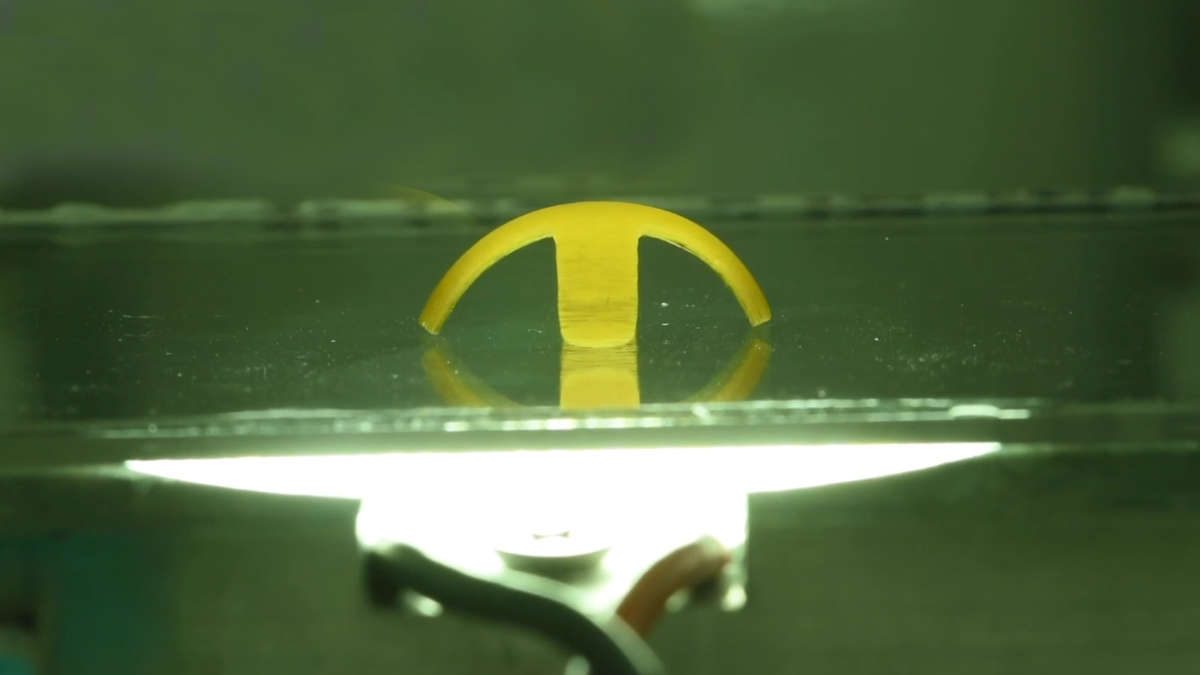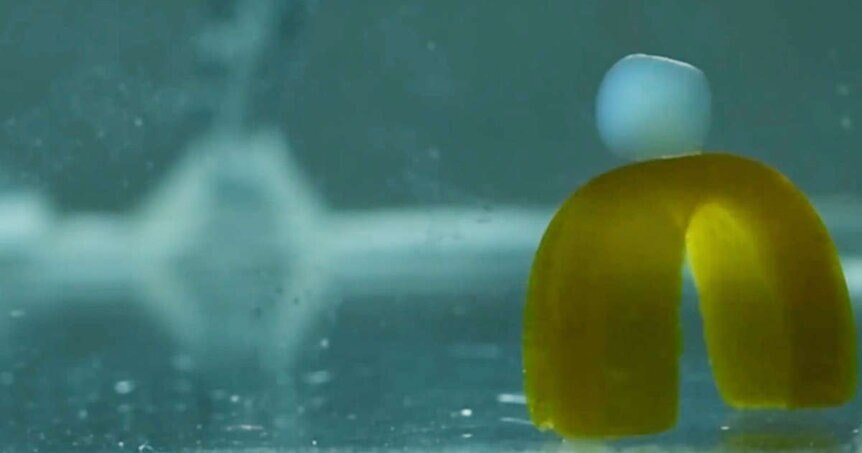Create a free profile to get unlimited access to exclusive videos, sweepstakes, and more!
Agile new aqua-robot capable of walking, rolling, and a spinning break-dance

Flexible soft robots are a hot commodity in laboratories these days as researchers discover new and remarkable ways to devise bendable machines whose movements and agility take their cue from Mother Nature.
To add to the march of these advanced inventions, scientists at Northwestern University have engineered a never-seen, life-like material that replicates the actions of an ambulating soft robot. This hybrid hydrogel device is able to step out at near-human speed, lift up and transport cargo to a different location, hop up hills, and even do a little spinning break-dance to drop a particle.
Its weight consists of almost 90% water, this minuscule, centimeter-sized 'bot comes alive without the need for intricate hardware, hydraulics, or electrical current. Strangely, the source of its amazing animation is light and its attraction to an external rotating magnetic field according to a paper published Dec. 9 in the online journal Science Robotics.
"Conventional robots are typically heavy machines with lots of hardware and electronics that are unable to interact safely with soft structures, including humans," explained Samuel I. Stupp, study co-author and director of the Center for Bio-Inspired Energy Science, a Northwestern-based Energy Frontier Research Center funded by the U.S. Department of Energy. "We have designed soft materials with molecular intelligence to enable them to behave like robots of any size and perform useful functions in tiny spaces, underwater or underground."
Similar to a banana-yellow, four-legged octopus, the capable little robot performs in an aquarium tank habitat which makes it well-suited for aquatic territory. Future robots could someday be molecularly designed to detect and actively eliminate unwanted particles in specific environments, medical or otherwise, or to employ their mechanical movements and specific locomotion to accurately deliver bio-therapeutics or cells to specific tissues.
"By combining walking and steering motions together, we can program specific sequences of magnetic fields, which remotely operate the robot and direct it to follow paths on flat or inclined surfaces," added co-author Monica Olvera de la Cruz, deputy director of the Center for Bio-Inspired Energy Science. "This programmable feature allows us to direct the robot through narrow passages with complex routes."
The magic of the soft robot's precise movement and agility, made to imitate a number of sea creatures, lies within its water-filled structure and the embedded skeleton of aligned ferromagnetic nickel filaments. The soft component is a molecularly designed network with parts that allow it to respond to light, hold or expel water in its interior, and have the needed stiffness to respond rapidly to magnetic fields.
By introducing the robot to combinations of light and magnetic fields, Northwestern's team enabled a chemical synthesis to program molecules inside the hydrogel, allowing the machine to walk and roll. When exposed to the LED light, the robot's molecules repel H2O, letting water molecules escape and causing it to spring to life by bending from a flat position to a standing pose.
"The design of the new materials that imitate living creatures allows not only a faster response but also the performance of more sophisticated functions," Stupp said. "We can change the shape and add legs to the synthetic creatures, and give these lifeless materials new walking gaits and smarter behaviors. This makes them highly versatile and amenable to different tasks."
Programmable, rotating magnetic fields affect the robot's embedded skeleton to create cyclic forces on the soft molecular network to stimulate the legs.
Stupp and Olvera de la Cruz envision these versatile hydrogel materials creating objects for unlimited applications, including chemical production, next-generation tools for environmental technologies, or as smart biomaterials deployed in research for advanced medicine.
"Eventually, we'd like to make armies of microrobots that could perform a complicated task in a coordinated way," Stupp added. "We can tweak them molecularly to interact with one another to imitate swarming of birds and bacteria in nature or schools of fish in the ocean. The molecular versatility of the platform could lead to applications that have not been conceived at this point."
















